At the heart of the Sahyadri mountain ranges in Maharashtra lies the lesser-explored Gautala Wildlife Sanctuary, a paradise for nature and wildlife lovers. The sanctuary, which covers more than 260 square kilometres, is home to various plants and animals, including endangered species such as the Indian giant squirrel and leopard. The sanctuary also has many migratory birds, making it an ideal destination for bird watchers. The varied geographical terrain of deciduous trees, grassland and abundant wildlife makes the region suited for trekking and peaceful nature walks.
Location
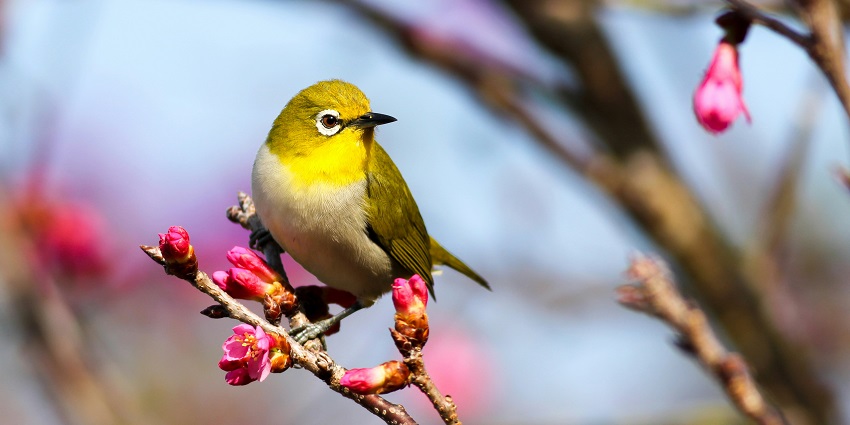
Photo: Boris Smokrovic / Unsplash / Image For Representation Only
Gautala Wildlife Sanctuary lies in the Jalgaon and Aurangabad districts of Maharashtra. It is less than 70 km from Aurangabad, one of the state’s major cities; hence, the airport is not far from the metropolitan city. Its location in the gorgeous Sahyadri ranges makes it all the more attractive to nature and adventure lovers.
Suggested Read: Places To Visit Near Aurangabad For History Enthusiasts
How To Reach
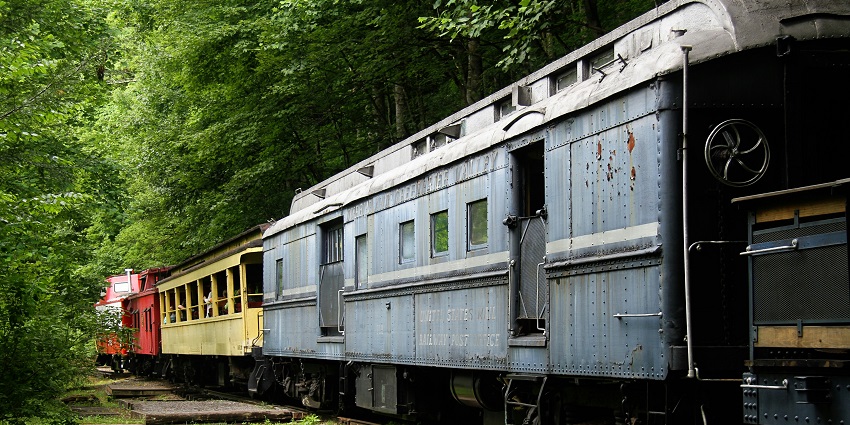
Photo: Melanie Hughes / Unsplash / Image For Representation Only
By Air: Gautala Wildlife Sanctuary is closest to Aurangabad, approximately 75 km away. A few daily flights from cities like Mumbai, Delhi and Hyderabad connect to the airport. Taxis and buses are available at the airport to proceed toward the sanctuary.
By Rail: The closest railway station is Aurangabad Railway Station, nearly seventy kilometres from the reserve. Aurangabad is accessible by train from other important cities, such as Mumbai, Pune, and Hyderabad. A taxi or bus ride can be taken to the sanctuary at the station.
By Road: Gautala Wildlife Sanctuary is well connected by road with Aurangabad (70 km) and Jalgaon (80 km). There are state buses at regular intervals, as well as taxis or self-drive vehicles. The roads are quite good, so it will be a pleasant journey.
Places To Visit In And Around Gautala Wildlife Sanctuary
1. Ajanta Caves
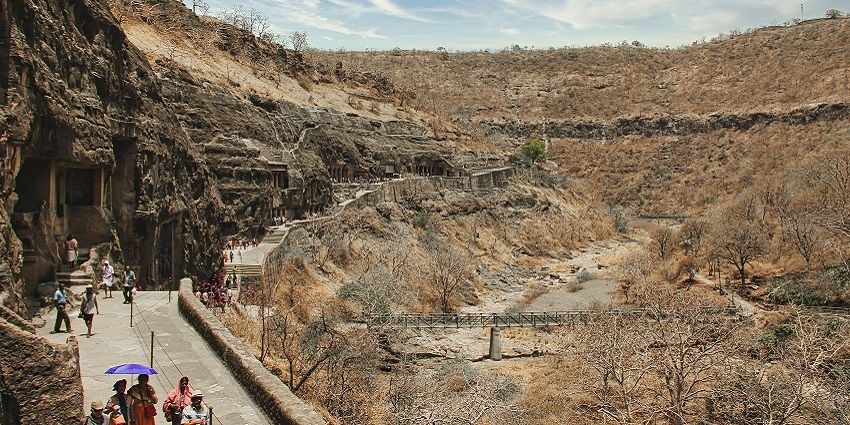
Ajanta Caves are a UNESCO World Heritage site, renowned for their ancient Buddhist rock-cut caves. These 29 caves, dating back to the 2nd century BCE, house some of the finest examples of Indian art, including intricate murals and sculptures. Ajanta is particularly famous for its vibrant frescoes that depict the life of Buddha and various Jataka tales. The caves are a popular tourist attraction near the Gautala Wildlife Sanctuary and also reflect India’s ancient architectural mastery and spiritual significance, drawing visitors from across the globe. The detailed carvings and paintings, preserved over centuries, showcase the exceptional skill of ancient Indian craftsmen.
Location: Near Ajanta Village, Maharashtra
Timings: 8 AM – 5 PM (Tuesday-Sunday), closed on Monday
Entry Fee: ₹10 for Indian visitors, ₹250 for foreign visitors
Suggested Read: Discover The Majestic Ajanta Temple
2. Ellora Caves
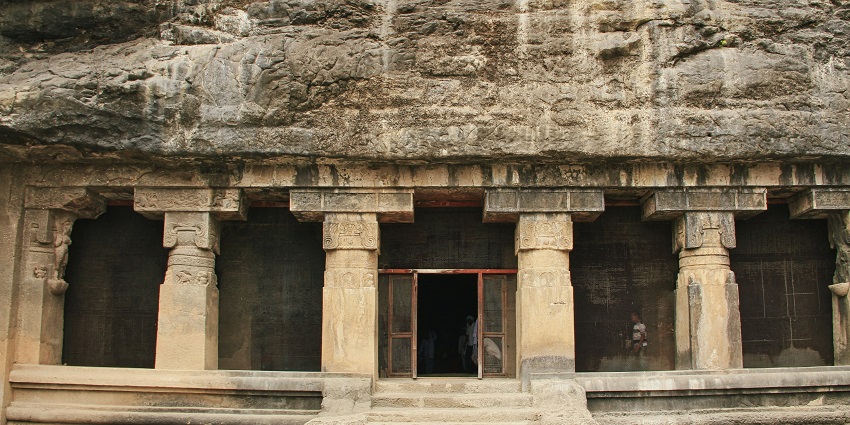
Ellora Caves, another UNESCO World Heritage site, features a collection of 34 rock-cut temples and monasteries, showcasing the religious harmony of ancient India with Hindu, Buddhist, and Jain architecture coexisting. The Kailasa temple, carved from a single rock, is the highlight of Ellora and is considered one of the most magnificent monolithic structures in the world. These caves, built between the 6th and 10th centuries, offer a glimpse into India’s rich cultural past. The intricate carvings and sculptures within the caves reflect the artistic brilliance and spiritual devotion of ancient Indian craftsmen.
Location: Aurangabad district, Maharashtra
Timings: 6 AM – 6 PM (Tuesdays are off)
Entry Fee: For Indians, it is ₹40; for foreigners, ₹600,
3. Anwa Temple
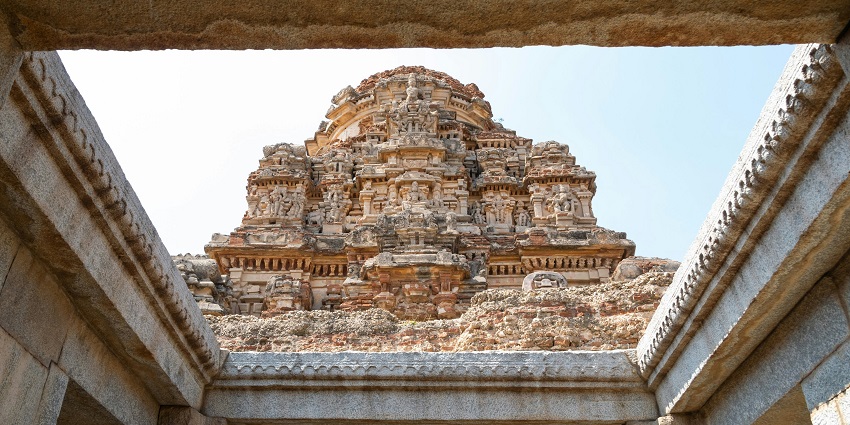
Photo: Siddhesh Mangela / Unsplash / Image For Representation Only
Anwa Temple, located about 50 km from Gautala, is a lesser-known but architecturally significant temple from the 12th century. The temple is dedicated to Lord Shiva and is known for its intricate Hemadpanthi style, characterised by its stone construction without using cement or lime. The temple is an important cultural landmark that reflects the religious heritage of the region, providing a peaceful setting for visitors. The temple is a popular place to visit near the Gautala Wildlife Sanctuary and features beautifully carved pillars and intricate motifs, showcasing the artistry of the era.
Location: 10 km away from Golegaon, near Aurangabad, Maharashtra
Timings: 6 AM – 6 PM
Entry Fee: Free
Suggested Read: Ramdara Temple
4. Pitalkhora Caves
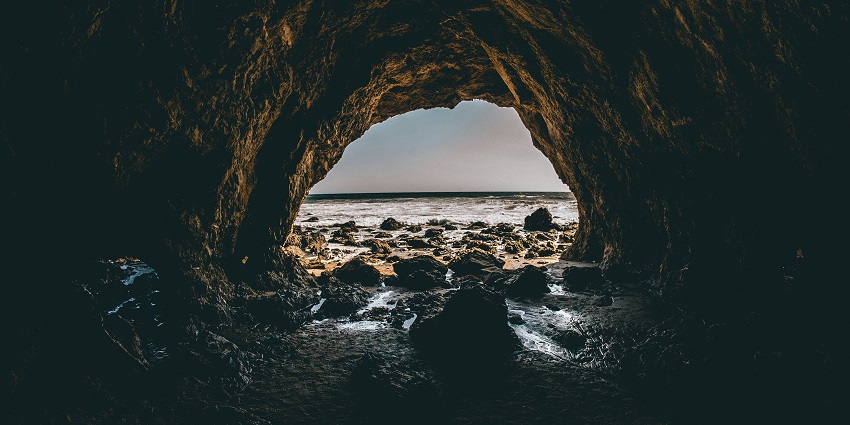
Photo: Matty Adame / Unsplash / Image For Representation Only
Pitalkhora Caves, approximately 40 km from the Gautala Wildlife Sanctuary, are among the oldest Buddhist monuments in India, dating back to the 3rd century BCE. The 14 rock-cut caves feature impressive sculptures and inscriptions that offer insights into early Buddhist architecture and art. Though lesser-known than Ajanta or Ellora, Pitalkhora provides a quieter, more intimate experience for history enthusiasts and those looking to avoid the tourist rush. Additionally, the caves are set against a lush green backdrop with a waterfall nearby, making the trek to Pitalkhora a scenic and rewarding experience for nature lovers.
Location: Aurangabad-Chalisgaon Road, Aurangabad, Maharashtra
Timings: 8 AM – 5 PM
Entry Fee: Free
5. Bani Begum Garden
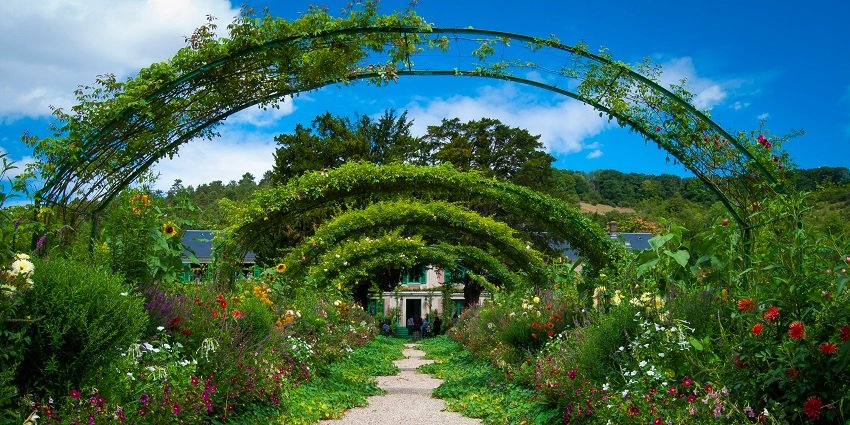
Photo: Veronica Reverse / Unsplash / Image For Representation Only
Bani Begum Garden is a Mughal-style garden located near Aurangabad, about 70 km from Gautala. It is known for its beautiful landscaping and Mughal architecture, featuring fountains, water channels, and terraced gardens. The garden is also home to the tomb of Bani Begum, the wife of one of Aurangzeb’s sons. The peaceful ambience and stunning design make it a popular spot for relaxation and photography. It also serves as an important historical site, reflecting the grandeur of Mughal-era garden design and architecture.
Location: 25 kilometres from Aurangabad City, Khuldabad, Aurangabad
Timings: 6 AM – 7 PM
Entry Fee: Free
Suggested Read: Places To Visit In Sawantwadi To Soak In The Tranquillity
Where To Stay

Photo: Steven Ungermann / Unsplash / Image For Representation Only
There are several accommodation options near Gautala Wildlife Sanctuary. You can find budget-friendly guesthouses and eco-friendly resorts in Aurangabad and Jalgaon. Some of these eco-resorts offer rustic yet comfortable stays in proximity to nature, providing an immersive experience in the wilderness. For those seeking more comfort, hotels in Aurangabad, ranging from mid-range to luxury, offer modern amenities like Wi-Fi, swimming pools, and restaurants.
Where To Eat

Photo: Shakti Rajpurohit / Unsplash / Image For Representation Only
There are many eateries and restaurant near Gautala Wildlife Sanctuary that offer scrumptious food and appetising local cuisines. Some of the famous restaurants and eateries include Samarth Cafe, Garikipati Restaurant, The Hotel Ramkrushna Mahal and many more.
Suggested Read: Best Food In Aurangabad
Best Time To Visit

Photo: Frida Lannerström / Unsplash / Image For Representation Only
The best time to visit Gautala Wildlife Sanctuary is between October and March. During this period, the weather is pleasant, and wildlife is more easily spotted. The summer months can be extremely hot, making wildlife sightings more challenging. Monsoon season, while offering lush green landscapes, can make some parts of the sanctuary inaccessible due to heavy rainfall and muddy trails.
Other Factors To Consider

Photo: Anete Lūsiņa / Unsplash / Image For Representation Only
Average Cost Of The Trip
A 2-3 day trip to Gautala Wildlife Sanctuary, including transportation, accommodation, food, and entry fees, typically costs around ₹5,000-₹8,000 per person, depending on your mode of travel and choice of accommodation.
Tips For Travellers
- Always maintain a safe distance from animals, avoid feeding them, and follow sanctuary rules.
- Bring sufficient water, snacks, sunscreen, and insect repellent, as amenities within the sanctuary are limited.
- If you plan to trek, wear sturdy shoes, and carry a first-aid kit. Always follow the designated trails.
Suggested Read: Shopping in Aurangabad
Gautala Wildlife Sanctuary offers a unique blend of natural beauty and rich biodiversity, making it a perfect destination for wildlife enthusiasts, nature lovers and general tourism. With its proximity to historical wonders like Ajanta and Ellora, it provides a complete travel experience. Plan your next adventure with TripXL and pack your bags to immerse yourself in the untouched wilderness of Maharashtra.
Cover Photo: Adaivorukamuthan / Unsplash / Image For Representation Only


 WhatsApp
WhatsApp
 Twitter
Twitter









